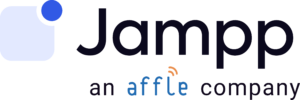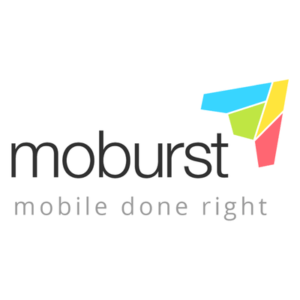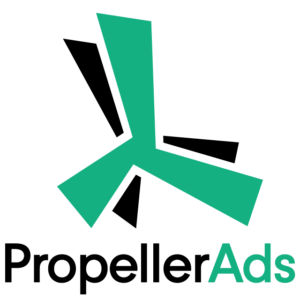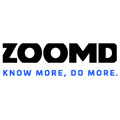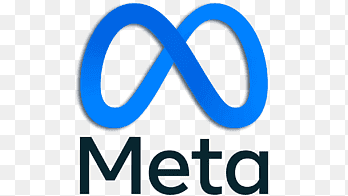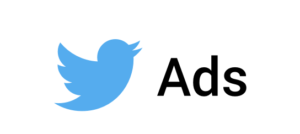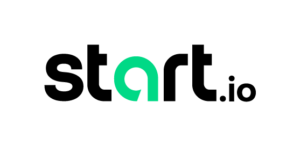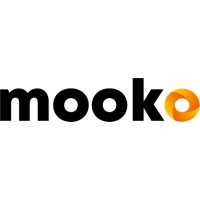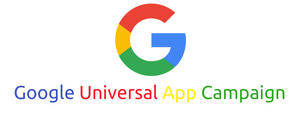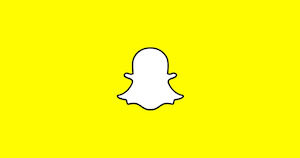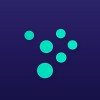App install ads platforms are key to boosting user acquisition through increased app installs. In this guide, we’ll explore the top platforms and show you how they can benefit both app owners and marketers. By the end, you’ll have a solid understanding of how these platforms can significantly enhance your mobile app’s reach and success.
In 2019, app installs ad spend reached almost $60bn. But by the end of 2022, reports say it could double to over $120bn. And with such steep and fast market growth, competition is exploding for app install ads.
So how can you plan strategic, winning, app install campaigns that beat the competition? Well, increasing app installs is easier with the right platform. And many of them offer a range of services based on CPI (Cost-Per-Install) or CPA (Cost-Per-Action).
Wondering how to increase engaged, qualified new users? Get in touch with our team of user acquisition experts to discuss a custom outcome-based strategy.Efficient, Effective User Acquisition Made Easy
Using app install ads platforms is essential for running a successful app install ad campaign. They offer numerous advantages, from targeted advertising to detailed analytics, helping you optimize your marketing efforts. We’ll delve into these benefits and explain how they can make a difference in your app’s performance.
Understanding the basics of app installs is crucial for boosting user acquisition. This guide will provide you with fundamental knowledge and actionable insights to help you leverage app install ads effectively. Whether you’re new to the concept or looking to refine your strategy, we’ve got you covered.
What is are app install ads?
App installs happen when new users download apps and open them for the first time. And app install ads contain deferred deep links that recognise users’ operating systems and divert them to their relevant app store.
App install ads are usually paid ads that run on social media platforms and search engines. And they make up a core part of paid user acquisition strategies for app marketers.
User Acquisition Buyer's Guide
Download our User Acquisition Buyer’s Guide to get a full list of the best service providers on the market to choose from. The guide also covers what is a user acquisition company and how to choose the right one.
Marketers who engage with app install ad campaigns can drive large increases in user acquisition. Plus, mobile app install advertising is skyrocketing. Over the past 3 years, advertising spend on app installs doubled. So, with spending now into the hundreds of billions of dollars, competition to get app installs is intense.
The best app install ads platforms
App install ads platforms are ad networks that specifically focus on promoting and driving installs of mobile apps. These platforms enable app developers to create and run ad campaigns targeted at users who are the most likely to download and install their apps.
This form of advertising is commonly used to increase app downloads and boost user acquisition.
We’ve listed the best app install ads platforms below.
1. Performcb
 Performcb is a leading network that specializes in outcome-based marketing solutions. The company provides a range of services aimed at driving customer user acquisition and boosting app installs.
Performcb is a leading network that specializes in outcome-based marketing solutions. The company provides a range of services aimed at driving customer user acquisition and boosting app installs.
Their offerings include the cost-per-acquisition, cost-per-install, cost-per-lead, and pay-per-call models and Performcb uses advanced targeting options to ensure that app install ads reach the most relevant audience wherever possible.
Overview
Founded in 2002, Performcb has built a strong reputation in the performance marketing industry. Since 2015, it has been recognized as the number-one CPA Network worldwide.
The company focuses on various verticals, including finance, entertainment, eCommerce, health, and wellness.
Services
Performcb provides its customers with the following services:
- Real-time analytics for campaign performance and transparency so you can see where new app installs are coming from
- Software for advanced fraud detection and protection that ensures brand safety and marketing compliance
- Specialized strategies for industries such as finance, entertainment, eCommerce, health, and wellness to boost user acquisition
2. Moburst
 Moburst is a user acquisition agency that specializes in promoting mobile apps. The company offers a range of services, including app store optimization, mobile advertising, influencer marketing, and even social media marketing.
Moburst is a user acquisition agency that specializes in promoting mobile apps. The company offers a range of services, including app store optimization, mobile advertising, influencer marketing, and even social media marketing.
Moburst helps app developers and publishers increase their app’s visibility and boost their overall user acquisition and, subsequently, their app installs.
Overview
Moburst was founded in 2013 by Gilad Bechar. Since then, it has served startups and brands such as Google, Samsung, Reddit, Uber, Dunkin, YouTube, Bumble, Robinhood, and Playtika.
Moburst has offices in New York City, San Francisco, London, and Tel Aviv.
Services
Moburst provides its customers with the following services:
- Focuses on purchasing ad space across various platforms to target the right audience effectively
- Optimizing your app’s presence on app stores to improve visibility and increase download rates
- Creative solutions, including the production of banners, video ads, and other promotional materials
3. InMobi
 InMobi is a global mobile ad company that initially started as an SMS-based search and monetization business.
InMobi is a global mobile ad company that initially started as an SMS-based search and monetization business.
InMobi employs advanced targeting techniques to reach the most relevant audience for app install campaigns and focuses on helping brands engage with their audiences through mobile advertising platforms.
Overview
InMobi was founded in 2007 as Mkhoj in Mumbai, India. The company has been recognized for its innovation and impact in mobile advertising.
InMobi’s client list includes many prominent companies across various industries, including Lenovo, Kellogg’s, Cars.com, L’Oréal, Wendy’s, Mastercard, Samsung, Dove, Vodafone, Nokia, KIA, Snickers, Dell, and Swiggy.
Services
InMobi provides its customers with the following services:
- Supports various ad formats to engage users and encourage app installs
- A smart lock screen platform, a live entertainment platform, and Nostra, a dedicated mobile gaming platform
- Monetization solutions for mobile apps and websites, identity resolution solutions, and in-app advertising for games
4. Google App Campaigns
 Google App Campaigns (formerly Universal App Campaigns) are a type of advertising campaign provided by Google Ads designed to promote mobile apps across Google’s extensive network of properties, including Google Search, Google Play, and YouTube.
Google App Campaigns (formerly Universal App Campaigns) are a type of advertising campaign provided by Google Ads designed to promote mobile apps across Google’s extensive network of properties, including Google Search, Google Play, and YouTube.
Advertisers can choose from several campaign objectives based on their goals and can focus on driving a high volume of app installs as well as target users likely to complete specific in-app actions.
Overview
Services
Google App Campaigns provides its customers with the following services:
- Google’s algorithms automate ad creation, bidding, and targeting, optimizing for the best performance
- Target users likely to complete specific actions within the app
- Banner and interstitial ads are served across a wide range of websites and apps
5. Propeller Ads
 PropellerAds is a global ad network that focuses on providing targeted traffic for advertisers as well as monetization solutions for publishers. They offer a variety of ad formats, including pop-unders, push notifications, native ads, display ads, and more.
PropellerAds is a global ad network that focuses on providing targeted traffic for advertisers as well as monetization solutions for publishers. They offer a variety of ad formats, including pop-unders, push notifications, native ads, display ads, and more.
The platform allows advertisers to reach their target audience through advanced targeting options such as geo-targeting and device targeting and drive new installs.
Overview
PropellerAds was founded in 2011 and is headquartered in Limassol, Cyprus.
The company has grown to become one of the largest ad networks in the world, serving over 1 billion ad impressions per day to users in over 195 countries.
Services
PropellerAds provides its customers with the following services:
- A variety of ad formats, including pop-unders, push notifications, native ads, and display ads
- Advanced targeting options such as geo-targeting, device targeting, and fraud prevention measures to ensure high-quality traffic
- Real-time reporting and analytics to help optimize campaigns as well as dedicated account managers to provide personalized support
6. Digital Turbine
 Digital Turbine is a mobile tech company that provides a range of services to help app developers and mobile operators distribute and monetize their apps.
Digital Turbine is a mobile tech company that provides a range of services to help app developers and mobile operators distribute and monetize their apps.
The company’s platform, known as the Ignite platform, allows app developers to promote their apps to users across a range of channels, including preloaded app bundles, native app installs, and mobile advertising to drive new installs at a rapid pace.
Overview
The company was founded in 1998 and is headquartered in Austin, Texas. It has partnerships with mobile operators and app developers around the world.
Digital Turbine is committed to helping app developers and mobile operators reach more users and achieve their business goals.
Services
Digital Turbine provides its customers with the following services:
- App recommendation engine that uses machine learning algorithms to suggest relevant apps to users
- A comprehensive mobile app distribution and monetization platform that allows app developers to reach more users across a range of channels.
- Custom app stores that are tailored to your specific needs and provide users with a more personalized app experience
7. Zoomd
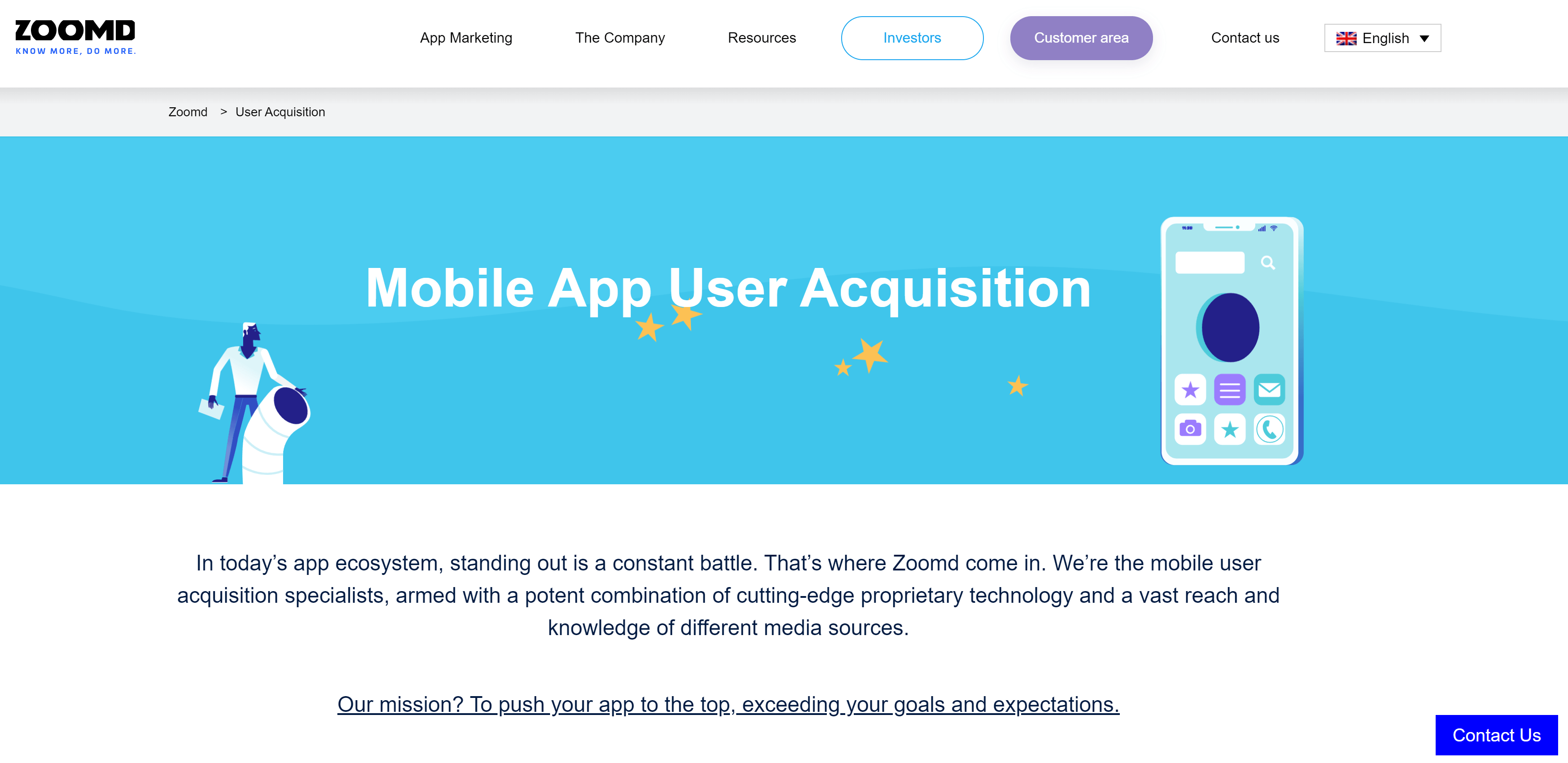 Zoomd offers a variety of services, including self-serve products, fully managed services, a demand-side platform for programmatic buying, and an autonomous platform called Albert.AI for better campaign management.
Zoomd offers a variety of services, including self-serve products, fully managed services, a demand-side platform for programmatic buying, and an autonomous platform called Albert.AI for better campaign management.
They also provide creator-generated content and creative video services to enhance marketing campaigns and drive new app installs.
Overview
The company was founded in 2007 and provides a comprehensive platform for advertisers, helping them achieve key performance indicators.
Zoomd serves clients in over 70 countries and has worked with numerous Fortune 500 brands and top-grossing app developers. Its headquarters are in Herzliya, Israel, and it has offices in Vancouver, Canada.
Services
Zoomd provides its customers with the following services:
- Targeting users based on age, gender, location, and other demographic factors
- Monitor key metrics like installs, cost per install, and return on investment through an easy-to-use dashboard
- User acquisition strategies that leverage multiple channels, including social media giants, and hyper-targeted ad networks
8. RevX
 RevX is a performance-based mobile advertising platform that focuses on app re-engagement and retargeting.
RevX is a performance-based mobile advertising platform that focuses on app re-engagement and retargeting.
The platform helps app developers and marketers re-engage their existing users, drive repeat usage, and increase in-app conversions as well as target specific devices, operating systems, and network carriers to drive new installs.
Overview
RevX was founded in 2014 by Mukesh Agarwal and Sandeep Singh. The company was established to provide performance-based mobile advertising solutions, focusing on app re-engagement and user acquisition through advanced targeting and optimization technologies.
The pair aimed to create a platform that could deliver high-quality user acquisition and engagement for app developers and marketers. RevX has since grown to become a significant player in the mobile ad space.
Services
RevX provides its customers with the following services:
- Operates on a CPI model, ensuring that advertisers pay only when their app is installed
- Is able to analyze user data and optimize targeting strategies based on user behavior and engagement patterns
- Integrates with MMPs like Adjust, AppsFlyer, and Kochava for precise attribution of new installs
9. adjoe
 adjoe is a leading mobile ad platform committed to challenging the status quo. Adjoe helps advertisers acquire users who are more likely to be interested in their apps, thus improving the quality of users overall.
adjoe is a leading mobile ad platform committed to challenging the status quo. Adjoe helps advertisers acquire users who are more likely to be interested in their apps, thus improving the quality of users overall.
By creating market-changing tech and engaging ad formats they ensure app developers and publishers unlock new ways to exceed their user acquisition and revenue goals. Acquired users are typically of high quality and more likely to remain engaged with apps over time.
Overview
Adjoe was founded in 2016. It is a mobile ad-tech company based in Hamburg, Germany, that specializes in monetization solutions for mobile apps.
Backed by both AppLike Group and Bertelsmann, the company has secured €100 million in funding to continue pushing the mobile adtech industry forward and help apps achieve their next revenue milestone.
Services
adjoe provides its customers with the following services:
- Runs CPI campaigns where advertisers only pay when a user installs their app. This model ensures that the investment directly translates into new users
- Through its “Playtime” model, Adjoe rewards users for spending time in the app after installation
- Utilizes rewarded ads, where users are incentivized to install apps or complete specific actions within an app in exchange for in-app rewards
10. ASTRAD
 ASTRAD is a tech product from adjoe, and it functions as an ad delivery partner within the mobile ad ecosystem.
ASTRAD is a tech product from adjoe, and it functions as an ad delivery partner within the mobile ad ecosystem.
ASTRAD focuses on effectively delivering ads to mobile apps and optimizing ad monetization strategies. The tech can identify and target lookalike audiences based on the characteristics of an app’s existing user base, helping acquire new users who are likely to exhibit similar engagement patterns.
Overview
Adjoe launched Astrad in 2023. The product is part of adjoe’s expansion into more advanced ad delivery and user acquisition solutions.
Gaming studios use adjoe’s rewarded ad formats to increase user engagement and drive in-app purchases.
Services
ASTRAD provides its customers with the following services:
- Supports the delivery of rewarded ads, where users are incentivized to engage with an ad in exchange for in-app rewards
- Engaging ad formats like interactive ads and video ads that capture users’ attention more effectively
- Cross-promotion within an app developer’s portfolio, allowing the promotion of new apps to an existing user base
11. AppLovin
 AppLovin is a comprehensive mobile tech platform that enables app developers and publishers to grow their businesses by leveraging advanced marketing and monetization tools. It supports its clients’ growth by providing scalable solutions that can handle increasing user bases and ad demands.
AppLovin is a comprehensive mobile tech platform that enables app developers and publishers to grow their businesses by leveraging advanced marketing and monetization tools. It supports its clients’ growth by providing scalable solutions that can handle increasing user bases and ad demands.
AppLovin provides a powerful ad network that helps developers monetize their apps by displaying various ad formats and drive new installs to boost their user aquisiton.
Overview
AppLovin was founded in 2012 by Adam Foroughi, Andrew Karam, and John Krystynak. The company has since grown to become a significant player in the mobile advertising industry.
Clients include Facetune, who used AppLovin’s AppDiscovery campaigns to efficiently grow its subscriber base, and Experian, who leveraged the platform to acquire new customers at optimal costs.
Services
AppLovin provides its customers with the following services:
- Analytics and reporting tools that provide insights into user behavior and ad performance, enabling data-driven decision-making
- Scalable solutions that can handle increasing user bases and ad demands
- Various ad formats and mediation features to help developers maximize their ad revenue
12. Meta Ads
 Meta Ads (formerly known as Facebook Ads) is a powerful tool for mobile user acquisition.
Meta Ads (formerly known as Facebook Ads) is a powerful tool for mobile user acquisition.
Overview
Facebook, which later rebranded as Meta in October 2021, initially introduced its ad platform shortly after its launch in 2004.
Services
Meta Ads provides its customers with the following services:
- Enables targeting based on user interests, behaviors, and activities, enabling advertisers to reach users who are more likely to engage with their app
- Automatically optimizes ad delivery based on campaign goals, such as cost per install or cost per action
- Allows advertisers to target users who are similar to their existing customer base, increasing the chances of acquiring high-quality users
13. AdQuantum
 AdQuantum is a mobile marketing and performance marketing agency that specializes in helping apps and businesses scale their user acquisition efforts.
AdQuantum is a mobile marketing and performance marketing agency that specializes in helping apps and businesses scale their user acquisition efforts.
Overview
AdQuantum was founded in 2015 by Sergey Denisenko and Dmitry Bogdanov.
The company is known for its data-driven approach, leveraging analytics and creative strategies to optimize ad campaigns across various platforms, including Facebook (now Meta), Google, and other major ad networks.
Services
AdQuantum provides its customers with the following services:
- Develops comprehensive strategies for running paid ad campaigns across multiple platforms, including Facebook, Google, and TikTok
- Manages all aspects of user acquisition campaigns, from ad creation to optimization, ensuring that clients achieve the best possible results
- Uses advanced analytics and continuously monitors and adjusts campaigns to improve performance
What do app install ads platforms do?
Gaining increases in-app installs is a complex endeavor. But marketers can gain the expertise, knowledge, tools and advertising creative support they need by leveraging support from app install ad platforms.
Buying advertising space via programmatic
Programmatic advertising allows marketers to benefit from automated, real-time bidding for advertising space. And app install ad platforms help you to get hold of ad space using programmatic platforms. These are defined as:
- Demand Side Platforms (DSP): DSPs let you buy digital ad space automatically via ad exchanges. Buyers can target audiences based on data, e.g. location, age, and then target audiences that meet these parameters.
- Supply Side Platforms (SSP): SSPs manage ad space inventory, making them a little different from DSPs because DSPs manage ad buying. In practice, SSPs work with DSPs to help manage existing ad inventory. And they connect to multiple ad exchanges to get the widest reach of potential buyers.
- Data Management Platforms (DMP): DMPs are independent platforms that centralize data and build a comprehensive user profile using algorithms. They also match up ad inventory to ad space, acting as a catalyst for programmatic to work.
- Ad Exchange: An Ad Exchange is the final piece of the puzzle. It is like a trading floor, where SSPs and DSPs meet up to agree on buying and selling ad inventory.
Identifying and targeting custom or lookalike audiences
Many platforms aid with managing data to support with identifying, segmenting and targeting audiences. And since over 60% of app marketers think targeted ads, that use purchasing data, are the solution to finding new users, it’s a critical function to success.
Develop app install ads creative
Marketers need to choose the right ad format and include the right data as part of their ads. And the key elements include:
- Images: Particularly if you’re running ads on Instagram, images will be central to your campaign’s success.
- Copy: Solving a user’s problem can gain higher levels of engagement.
- CTA: Try out different CTA (Calls-to-action) as part of your testing.
Create full-funnel strategies
George Sharpe, Founder of Favoured, says full-funnel marketing means marketing beyond app installs. And many app install ad platforms can offer a bigger picture approach to marketing, helping app marketers to create holistic campaigns that take advantage of what happens before and after an app install.
Manage attribution and performance tracking
Tracking performance is vital to the success of your campaign. And most app install ad platforms can support this for you. Testing is key, which is why many app install ad platforms also support data segmentation and targeting.
What are the different types of app install ads platforms?
App install ad platforms come in different forms. Some take an agency approach and others operate as SaaS cloud-based platforms. Most will drive app install campaigns by working on a CPI or CPA basis.
Performance marketing platforms
Performance marketing is when you pay only for measurable results, usually via native ads. And while it’s often based on a CPM model and can reach thousands of prospects, it usually costs much more. The average CPM for Facebook Ads comes in at $14.9, whereas the average CPI is more like $1.97.
The advantage of this higher rate, though, is a lower risk of failure.
Growth marketing platforms
Growth marketing is about trialing and implementing new ways to gain app growth using innovation and technical ability. Growth marketing also covers full-funnel marketing, which helps app marketers to optimize app installs rather than leave them in isolation.
Self-Serve Advertising Platforms
Self-service advertising platforms are almost always SaaS products that enable advertisers to buy and manage ad campaigns themselves. They’re owned by third-party ad tech vendors. And because they don’t allow an advertiser to control supply sources, they aren’t technically DSPs.
Multi-Campaign Platforms
It’s usually much easier to track app install conversions across different platforms with a service that can track them for you.
Google Display ads, Google Search Network, Facebook Ads, Apple Search Ads – there are so many platforms to run app install ads. And so app marketers may benefit from working with multi-campaign platforms.
What are the benefits of app install ads for user acquisition (UA)?
So what’s so good about app install ads when it comes to UA? Some notable benefits include:
- Boosts App Store Optimization (ASO): App install ad campaigns drive traffic to an app in an app store. So, they’re a key driver for increasing App Store Optimization (ASO).
- Helps with App Event Optimization (AEO): In-app events like product launches, premieres, and special events can all benefit from increased traffic from app install ads.
- Increases ROAS through targeted A/B testing: With some attribution measures in place, marketers can carry out multivariate testing on app install ads using targeted campaigns. Then, they can use this learning to determine successful campaigns and increase Return on Ad Spend.
- Can increase in-app purchasing: By driving more users to download apps from the app store, marketers can gain additional revenue from in-app purchases.
- Encourages organic traffic: App install campaigns can raise a brand’s profile and increase the amount of organic traffic coming to an app store via search.
- You only pay if it succeeds: CPI and CPA rates can avoid arbitrary costs and improve your chance of getting results.
Evidence shows that app install ads help many verticals to promote their products and services and gain audience increases. So how do they work?
What are the different types of app install ads?
App install ads appear on a wide range of platforms and in a broad range of formats. And they include Native Ads, Search Network, Display Ads, Banner Ads and Short and Long-Form Video.
Google app campaigns
Also known as Universal App Campaigns (UACs), Google App Campaigns are ideal for new app launches, creating app awareness and driving app installs. They run across several Google-owned platforms such as Google Search Network, YouTube, Google Display Network and Discover.
Google needs input from marketers to run ads across these platforms. With it, Google can assess performance while providing useful insights.
- Type of Ad: Interstitial ad or Banner
- Ad Content: Description, App Store rating, icon
- Ad Location: Search network, Google Play, YouTube
- Action: What happens once users click on an ad (usually linking to the app store)
Google App Campaigns also run ads in the Google Play Store and show up for people who search for apps using relevant terms.
App search ads (ASA)
The Apple App Store can help you gain more installs by showing your app in an app store search. With a bidding system that lets the highest bidder appear right at the top of searches, 65% of installs happen after a store search. So you may want to leave some extra budget aside if you want to secure the top position in the search.
Facebook app install ads
Marketers can gain an increase in Facebook app installs by running ads across Facebook, Instagram and the Audience Network. But they’ll need to work with the Facebook SDK (Software Developer Kit) to be able to measure the rate of Facebook app installs.
App install ads can run via Facebook Ads, or by using a platform or Meta Business Partner.
Instagram app install ads
Instagram ads run in a native style, which helps audiences focus their attention on each ad. And this may be one reason why Instagram ads get a higher rate of clicks than Facebook ads.
Snapchat app install ads
Snapchat offers a younger audience to promote app installs to. And due to higher levels of engagement, the airline-booking app Hopper decreased its CPI rate by 50% using radius targeting.
TikTok app install ads
TikTok offers a wide range of creative advertising methods such as in-feed video, brand takeover and branded AR content. And many brands find in-feed ads to be the most effective at driving app installs.
How do app install ads work?
App install ads usually appear on search and social media. And most include a link to install an app or redirect a user to their relevant app store.
For marketers, including deferred deep links in app install ads helps them to manage attribution. And it offers a chance to track campaign progress using specific identifiers for iOS and Android devices.
To run app install ads, marketers need to define their budgets. They then need to get hold of advertising space. And many app install ad platforms enable you to bid for ad space through programmatic advertising.
Marketers also need to create an ad and include images, the name of the app and a CTA. Then it’s posted on a relevant platform like Google App Campaigns or Facebook App Install Ads.
Google Play Store
Although there are other app stores, most users will need the Google Play Store or Apple App Store to get their install. But set up and attribution is different between the two. For instance, Google tracks all conversions to the store by default whereas Apple App Store needs a code to do it.
App installs from Google Play Store totalled 30bn in the first quarter of 2022. And this exceeded Apple’s App Store download rates by X3.
Apple App Store
Apple App Store holds over 2m different apps, with over 8bn downloaded in the first quarter of 2022. And while all downloads from the App Store are non-chargeable, certain features such as in-app purchases do come at a cost.
Plus, Apple’s analytics tool makes it easy to track performance, app engagement and in-app event performances.
App install ads work based on several business models and metrics, all of which enable app companies to measure ROAS. They include:
Cost per install
Cost-Per-Install (CPI) metrics allow brands to drive installs by placing ads across a variety of media networks. And they get charged for any install based on a fixed or bid rate.
CPI rates are generally higher than others, sometimes as high as $3, due to better conversion rates. So if a user installs an app, it has a direct impact.
Cost per action (AKA cost per acquisition)
CPA rates differ from CPI rates in the way they only charge for specific actions. And they’re based on affiliate marketing practices.
But since fewer networks and platforms support this approach, it can be harder for marketers to gain results. This form is very measurable, though, since CPA rates are calculated by dividing cost by the number of conversions.
Cost per thousand (AKA cost per mile)
CPM or Cost Per Thousand rate is calculated based on every thousand impressions made from an ad.
CPM costs can vary from $0.78 to $7.00, depending on ad format and operating system. In 2021 the average Facebook CPM rate was $15.
Cost per click (CPC)
The Cost-Per-Click model is arguably the eldest of the rates family, dating back to early 2000. And it applies to any prospective user that clicks on the app install ad. Cost-Per-Click rates are generally cheaper since there’s less indication of conversion compared with CPI and CPA rates.
For example, a Facebook Ads CPC rate comes in at $1.35. And so CPC and CPM are both ways of ‘casting the net’ to gain attention. But they won’t always translate into direct conversions or app installs.
How much do app install ads cost?
Since we’ve already highlighted the various business models for app installs, here’s a quick rundown of the costs you could expect:
Cost per install (CPI)
| Type | Rate |
|---|---|
| Average Cost Per Install (CPI) | $1.75 |
| Average mobile app CPI (North America) | $5.28 |
| Average mobile app CPI (APAC) | $0.93 |
| Average mobile app CPI (EMEA) | $1.03 |
| Average mobile app CPI (Latin America) | $0.34 |
| iOS app CPI Globally | $3.6 |
| Android app CPI Globally (Google Play market) | $1.22 |
| Facebook Ads CPI (Cost Per Install) | $1.97 |
What are the best practices for app install ads?
So how can you create an effective app install ad campaign? We’ve set out a few suggestions below that may help:
Define objectives
Understanding and identifying campaign goals and objectives are at the core of every app install ad campaign. So start with defining your audience. Which sort of age range, location, behaviors and characteristics are you looking for in an audience?
Implement campaign tracking
There isn’t much point in running an app install ad campaign without analyzing what it’s doing. So make sure you’re tracking app installs and campaign performance by implementing the right monitoring tools.
Conduct testing
You want to understand which campaigns are hitting the spot and which aren’t. So, running A/B testing is one way of comparing response rates between variables.
Optimize creative assets
The creative content of your ad is vital to success. Because, if your ad contains too much text and not enough visuals, your bid value will increase.
Understand the bidding process
Each platform has a different bidding process. For example, Google Ads uses machine learning to rotate ads and adjust bids. Whereas Facebook uses Optimised CPM bidding, which leverages Facebook’s algorithms to optimize all campaigns.
Pros and cons of app install ads
Pros
- Increased downloads by bulk
- Higher rankings in app stores
- No-win-no-fee approach via CPA or CPI
- Measurable ROAS
- Boosts organic traffic
- Multiple campaign testing
- Supports business growth
Cons
- Risks low-quality acquisition
- High competition for app installs
- Campaigns can be complex
- Potential high costs for competitive ads
Work with top app install ads platforms
Getting increased app installs as part of an app launch or bulk drive can be complex. And so app marketers may find it much easier to align with an app install ad platform. Most of them will run on a CPI model and others use CPC or CPM. And of course, there are upsides and downsides to each of these approaches, as we’ve highlighted.
Today, getting more app installs should be only one element of a full-funnel marketing approach. App installs are one thing, but they’re only as powerful as the marketing practices that surround them.
App install ads platforms can provide a global, birds-eye, bigger picture approach to your campaigns that uses data in targeted and focused ways. So, please be our guest and take a look over our selected list of the best app install ad platforms.








